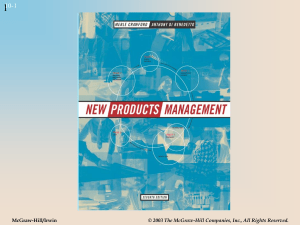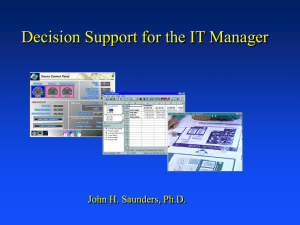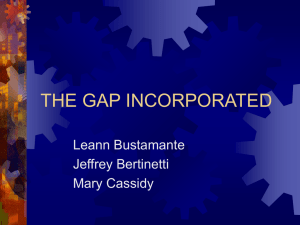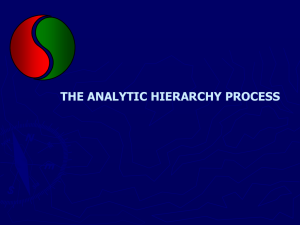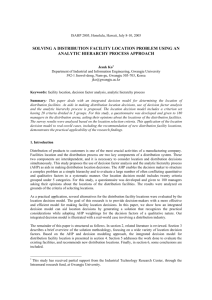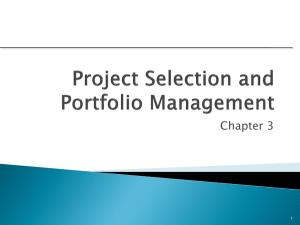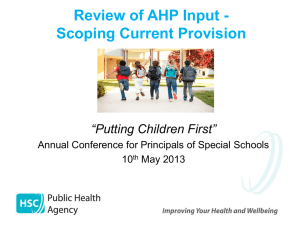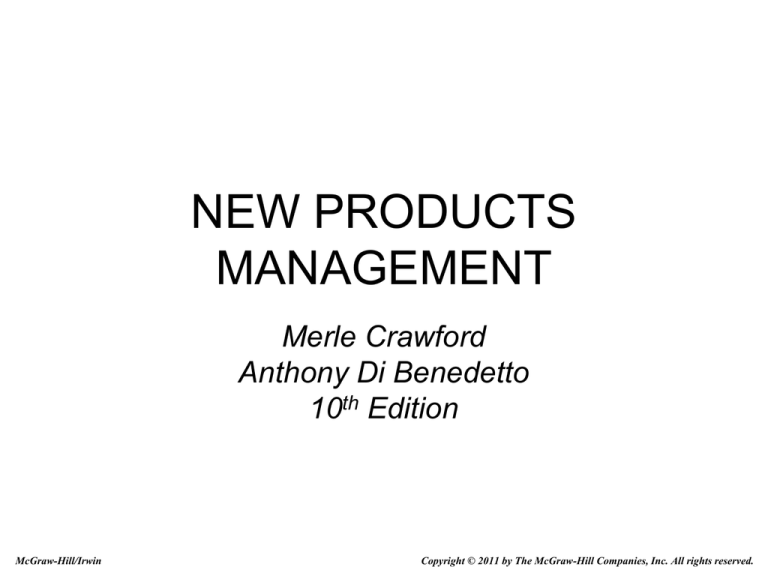
NEW PRODUCTS
MANAGEMENT
Merle Crawford
Anthony Di Benedetto
10th Edition
McGraw-Hill/Irwin
Copyright © 2011 by The McGraw-Hill Companies, Inc. All rights reserved.
Chapter 10
The Full Screen
10-2
Difficulties in Concept Selection
• One of the biggest challenges of product
management.
• What if every project under consideration has
passed all the hurdles so far?
• Lacking enough financial and human
resources, the firm needs a good concept
selection procedure, otherwise management
must:
– Guess (and select the wrong project)
– Approve too many projects (and underfund
everything).
10-3
The Full Screen
• A step often seen as a necessary evil, yet
very powerful and with long-lasting effects.
• Forces pre-technical evaluation, and
summarizes what must be done.
• Methods range from simple checklists to
complex mathematical models.
10-4
Purposes of the Full Screen
• To decide whether technical resources should be
devoted to the project.
– Feasibility of technical accomplishment — can we do it?
– Feasibility of commercial accomplishment — do we want
to do it?
• To help manage the process.
– Recycle and rework concepts
– Rank order good concepts
– Track appraisals of failed concepts
• To encourage cross-functional communication.
10-5
Screening Alternatives
• Judgment/Managerial Opinion
• Concept Test followed by Sales
Forecast
(if only issue is whether consumers will like it)
• Scoring Models
10-6
A Simple Scoring Model
Factors:
Degree of Fun
Number of People
Affordability
Capability
Student's Scores:
Fun
People
Affordability
Capability
Totals
4 Points
Much
Over 5
Easily
Very
Skiing
4
4
2
1
11
3 Points
Some
4 to 5
Probably
Good
Boating
3
4
4
4
15
Values
2 Points
Little
2 to 3
Maybe
Some
Hiking
4
2
4
3
13
1 Point
None
Under 2
No
Little
Answer: Go boating.
10-7
Source of Scoring Factor Models
10-8
A Scoring Model for Full Screen
Note: this model only shows a few sample screening factors.
Factor
Score (1-5)
Weight
Weighted Score
Technical Accomplishment:
Technical task difficulty
Research skills required
Rate of technological change
Design superiority assurance
Manufacturing equipment...
Commercial Accomplishment:
Market volatility
Probable market share
Sales force requirements
Competition to be faced
Degree of unmet need...
10-9
The Scorers
• Scoring Team:
Major Functions (marketing, technical, operations, finance)
New Products Managers
Staff Specialists (IT, distribution, procurement, PR, HR)
• Problems with Scorers:
May be always optimistic/pessimistic
May be "moody" (alternately optimistic and pessimistic)
May always score neutral
May be less reliable or accurate
May be easily swayed by the group
May be erratic
10-10
Industrial Research Institute
Scoring Model
Technical success factors:
Commercial success factors:
•
•
•
•
•
•
•
•
•
Proprietary Position
Competencies/Skills
Technical Complexity
Access to and Effective Use of
External Technology
• Manufacturing Capability
Customer/Market Need
Market/Brand Recognition
Channels to Market
Customer Strength
Raw Materials/Components
Supply
• Safety, Health and
Environmental Risks
Source: John Davis, Alan Fusfield, Eric Scriven, and Gary Tritle, “Determining a
Project’s Probability of Success,” Research-Technology Management, May-June 2001,
pp. 51-57.
10-11
Alternatives to the Full Screen
•
•
•
•
Profile Sheet
Empirical Model
Expert Systems
Analytic Hierarchy Process
10-12
A Profile Sheet
10-13
Project NewProd Screening
Model
• The idea is that by examining dozens of variables on real
product successes and failures, one would be able to
predict the likelihood of success of a new product at this
early stage, and to identify weak spots that can be
addressed before new product project approval.
• Current practices splits the screening model into two
groups: must-meet and should-meet criteria.
• Must-meet are “yes-no” questions even one “no” screens
the project out.
• Should-meet are scales, and high scores offset
(compensate for) any low scores.
10-14
Criteria Based on the NewProd Studies
• Must-Meet Criteria (rated yes/no):
– Strategic alignment
– Existence of market need
– Likelihood of technical feasibility
– Product advantage
– Environmental health and safety policies
– Return versus risk
– Show stoppers (“killer” variables)
10-15
Criteria Based on the NewProd Studies
(continued)
• Should-Meet Criteria (rated on scales):
– Strategic (alignment and importance)
– Product advantage (unique benefits, meets
customer needs, provides value for money)
– Market attractiveness (size, growth rate)
– Synergies (marketing, distribution, technical,
manufacturing expertise)
– Technical feasibility (complexity, uncertainty)
– Risk vs. return (NPV, IRR, ROI, payback)
10-16
Analytic Hierarchy Process (AHP)
• An analytical technique that gathers expert
judgment and uses it to make optimal decisions.
• In AHP screening models, the respondent
identifies the key criteria in the screening
decision, assessing which are the most
important. Each choice (project) is rated on each
criterion.
• The AHP software calculates scores for each
project and ranks them in terms of preferability.
• AHP analytical models such as Expert Choice
are commercially available.
10-17
Diagram for Analytic Hierarchy Process (AHP)
Goal: Select Best NPD Project
Market Fit
Tech. Fit
Dollar Risk
Uncertainty
Product
Product Line
Line
Design
Payoffs
Unmitigated
Channel
Materials
Losses
Mitigated
Logistics
Supply
Timing
Mfg. Tech.
Price
Mfg. Timing
Sales Force
Differential
Advantage
Products 1, 2, 3, and 4
10-18
Abbreviated Output from AHP
Ranking of Alternatives:
Project Overall Weight
P1
0.381
P2
0.275
P3
0.175
P4
0.170
xxxxxxxxxxxxxxxxxxxxxxxxxxxxxxxxxxxxxx
xxxxxxxxxxxxxxxxxxxxxxxxxxxx
xxxxxxxxxxxxxxxxxx
xxxxxxxxxxxxxxxxx
Recommendation: P1 is preferred as it has the highest overall
weight as calculated by AHP.
How did this happen? P1 was ranked by the managers as
among the highest on all of the most important criteria.
10-19



